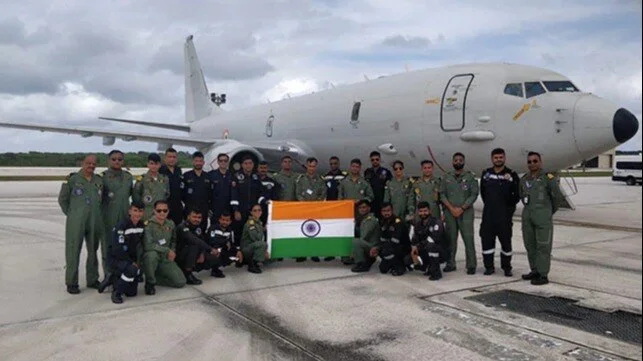New Delhi: Considered a game-changer, the Indian Navy‘s P-8I aircraft fleet consists of eight Poseidon aircraft. They have played a pivotal role in critical border situations, including in monitoring of Chinese deployments during the Galwan dispute and the build-up along the Line of Actual Control (LAC) in eastern Ladakh.
Having clocked a total of 40,000 flying hours since its induction in 2013, the recent upgrades to multi-role, long-range maritime warfare P-8I aircraft involve the integration of anti-ship missiles and torpedoes. These upgrades will significantly add to its offensive capabilities.
Stationed at Razali Naval Base in Chennai, the P-8I aircraft squadron of the Indian Navy deploys the P-8I aircraft under the designation INAS 312 Albatros. The P-8I aircraft have made the monitoring of the Indian Ocean maritime area more efficient, and enabled rapid response to suspicious activities. Along with maritime surveillance capabilities, the P-8I is instrumental in ground and air surveillance, espionage, and offensive operations. It is equipped with advanced weaponry, and is capable of effectively neutralising enemy warships and submarines.
Equipped with cutting-edge AN/APY-10 radar system developed by the American company Raytheon, the aircraft has powerful beach and underwater monitoring capabilities, even in adverse weather conditions.
The planes are capable of capturing images beneath the sea surface, with details of the target’s size, its speed and the changes occurring in it. During the Ladakh clash with China, the aircraft were strategically deployed to provide a clear view of Chinese activities.
The P-8I can accommodate 9 personnel, including two flight crew members and mission specialists. With a lifting capacity of 9,000 kg, the aircraft is 129.5-foot long, has a 123.6-foot wingspan, and is 42.1-foot high. It weighs approximately 62,730 kg, while its maximum takeoff weight reaches an impressive 85,820 kg, according to Commanding Officer Captain AK Singh. The Indian Navy needs at least six more such aircraft to keep an eye on its surrounding sea and land borders efficiently, he said.




